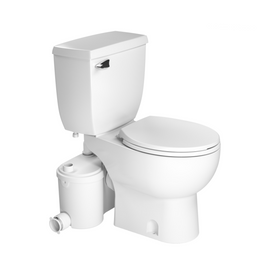
Home Furnishings: How to Discern Green from Greenwashed
Last Updated: Apr 7, 2025You're an environmentally conscious citizen who actively buys organic, green, and sustainable products. But are manufacturers of "green" products taking advantage of you? Sneaky marketers continue to play on our desire to buy sustainably sourced, local, ethical products. Some companies even use underhanded techniques and fake certifications to dupe you. Unfortunately, there is little regulation for using popular buzzwords like "sustainable," "green," and "environmentally friendly." Marketers throw these words around casually to get you to buy products, even when they don't meet and specific sustainability standards. This behavior is called "greenwashing."
Table of Contents
- What Is Greenwashing?
- What Sustainable Home Furnishing Questions Should You Ask?
- What Should You Look For in Sustainable Home Furnishings?
- Bottom Line
What Is Greenwashing?
Greenwashing is the deliberate marketing technique designed to disseminate misleading information to present an environmentally responsible public image. Common greenwashing phrases to look out for include:
- All-natural: This vague term is essentially meaningless. Many chemicals are naturally occurring and are poisonous. For example, would you buy something that contains "all-natural" formaldehyde?
- Made with recycled content: Any product with this label should indicate the exact percentage of recycled content. It should also detail the percentage of the recycled content that is post-consumer or pre-consumer (post-industrial).
- LEED-certified: No product is LEED-certified; only buildings, campuses, and neighborhoods can be LEED certified. People are LEED accredited. Products may be LEED compliant, but even that is suspect unless they have specifically spelled how the product is LEED compliant. If it is legit, they should indicate HOW the product meets LEED requirements and what credits it will help you achieve. For example, drywall could contribute toward LEED Residential points in two sections. First, in the Materials and Resources section for recycled content and local sourcing (MRc2: Environmentally Preferable Products) AND second, in the Indoor Environmental Quality section for Low-Emitting Products (IEQc7: Low-Emitting Products).
Here, we provide the questions to ask and guidelines to follow on how to weed out the greenwashed from the genuinely green.

What Sustainable Home Furnishing Questions Should You Ask?
To ensure your home furnishings are sustainably sourced and produced, you must pay attention and ask questions. Learn to ask sales associates and contact the manufacturer yourself to identify where they source the materials used to make home furnishings.
What Are the Ingredients?
Just as you read ingredients on the backside of labels at the grocery store, you must pay attention when purchasing everything from tables and mattresses to curtains and upholstery. Don't be afraid to ask store sales reps questions about the origin of materials, and check those certification labels! In many cases, the sales reps will not have the answers you are looking for, and you'll need to take the next step and contact the manufacturer. This process can take time, but luckily, manufacturers are becoming more and more aware that their customers care about sustainability, leading to more transparency in this area.
Where are the Raw Materials Sourced?
Home furnishings are produced from a combination of raw materials like wood, cotton, aluminum, and steel. While we'd like to believe materials are sustainably sourced, many companies use illegally sourced and unsustainable resources, sometimes unknowingly, to save money. Also remember, the further the materials come from, the larger the embodied energy footprint will be.
Where is the Product Manufactured?
From couches to bedding, all products are affixed with a manufacturing label identifying where the product was made. Europe typically has higher regulation standards for sustainable sourcing than the US, and Asian countries usually have lower or unregulated standards. Be on the lookout for visually appealing products the may be comprised of cheap and unregulated materials.

What Should You Look For in Sustainable Home Furnishings?
Look for reputable 3rd party accreditation logos. Many organizations work to identify and certify businesses that take the time to source and produce home furnishings sustainably. Remember to be curious and ensure that the logos presented are real and reputable. Just because the label boasts eco-friendly terms and uses green colors and images of leaves and the planet doesn't mean they're environmentally responsible in reality. Certifications to look for include:
- GREENGUARD certification identifies products containing sustainably low levels of volatile organic compounds (VOCs). It ensures that the product meets high indoor air quality standards.
- Global Organic Textile Standards (GOTS) certifies products comprised of a minimum of 70% organic fibers produced without toxic chemical dyes or additives.
- Fair Trade Certified logos identify goods that support equitable global trade. Fairtrade certified products benefit farmers, workers, fishers, consumers, industries, and the earth. Fair Trade is a certification program that ensures fair prices are paid to producers in developing countries.
- FSC Certification provides a stamp of approval that the wood was sourced from a sustainably managed forest. The Forest Stewardship Council (FSC) requires documentation of chain-of-custody along the entire supply chain.
- Cradle to Cradle Certification approves products that focus on moving toward a circular economy. Their certification indicates products go through a rigorous continuous improvement process in five key sustainability areas: material health, reuse, renewable energy and carbon management, water stewardship, and social fairness.

Durable, Long-Lasting Furniture
Look for furniture that can be repaired, refinished, disassembled, and recycled at the end of its useful life.
Repurposed, Reclaimed, and Recycled Products
Home furnishings made from reclaimed materials are most likely sustainable. Recycled metal and plastic furnishings are an excellent option. They can be melted down and reformed into new products at the end of their lifecycle. In particular, look for companies that take back their products to do just that—like carpet tiles from Interface Flor.
True Natural Origin
Bamboo is a popular sustainable material as it grows quickly. However, some bamboo products are still produced with pesticides and assembled with toxic materials in far-away places. The manufacturer should give you more information about the true origin and sustainability of their products.

Untreated or Naturally Treated Products
Look for wood, leather, and fabric home furnishings produced without toxic treatments that contain VOCs, flame-retardants, formaldehyde, or stain-resistant sprays.
Vintage and Secondhand Furnishings
Search marketplaces like Habitat for Humanity ReStores, Facebook Marketplace, Craigslist, Freecycle, garage and estate sales, and your local thrift stores for used home furnishings.
Buy Local
Look for locally made products that travel shorter distances to reach your home and are made with sustainably sourced materials.
DIY Furnishings
When in doubt, you can always create sustainable home furnishings yourself using reclaimed local materials.
Laura Bourland
Laura grew up in the California suburbs, far removed from environmentalism, but nature always has a way. She uprooted her life in 2015, moving to the countryside of Washington to live a more sustainable and simple life on 12 acres. She and her fiancee are learning on the job as they attempt everything from gardening and natural pest control to eco-friendly building and home improvement.











